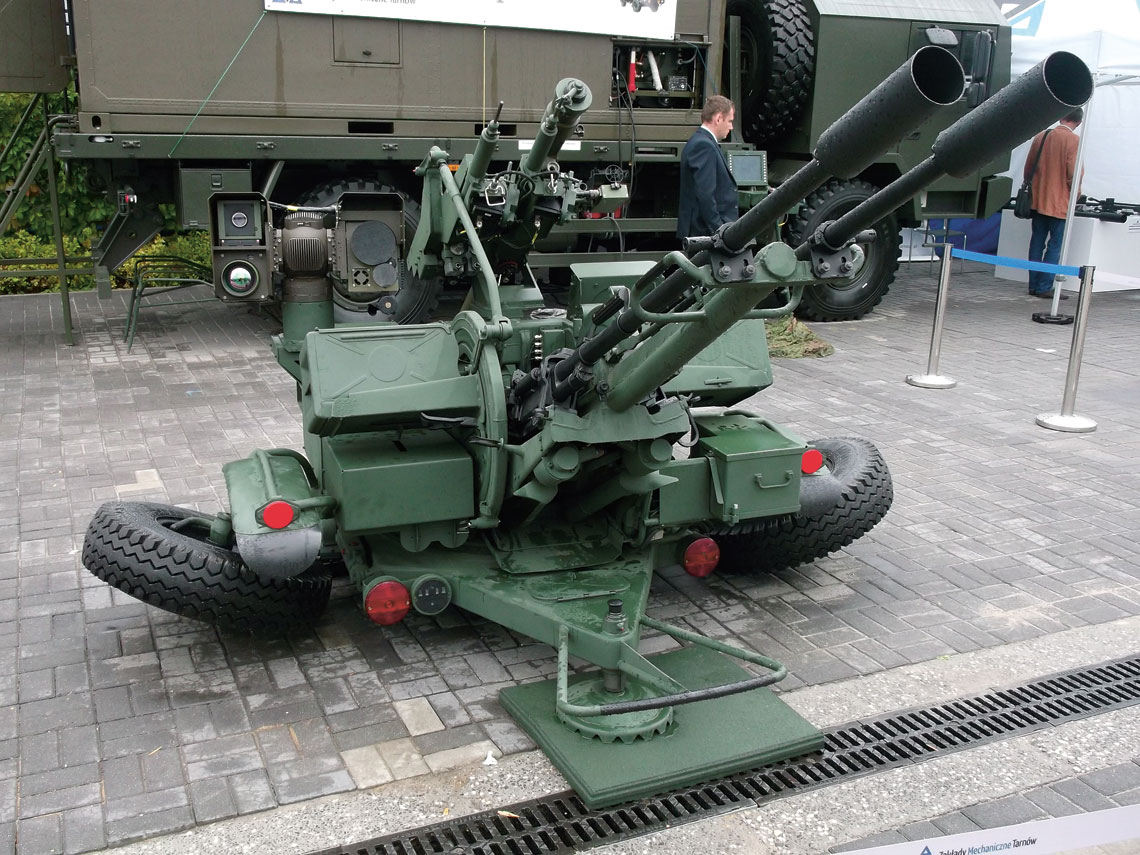
The saw is ready for production
Content
- The end of 2015 was a turning point in the PSR-A Pilica program, that is, the successful completion of plant research. Thus, the Pilica anti-aircraft complex has reached a level of maturity that allows it to be submitted for evaluation by representatives of the Ministry of National Defense. Moreover, subject to the adoption of appropriate decisions by the Ministry of Defense, serial Pilitsa in the adaptation mode can be delivered in parts in accordance with the delivery schedule adopted almost four years ago in the "Plan for the technical re-equipment of the Armed Forces for 2013-2022. “. The completion of work on the Pilica is all the more successful because we are dealing with a weapon system in which approximately 95% of the Polish scientific and technical thought and the national production base are used.
- Post navigation

The end of 2015 was a turning point in the PSR-A Pilica program, that is, the successful completion of plant research. Thus, the Pilica anti-aircraft complex has reached a level of maturity that allows it to be submitted for evaluation by representatives of the Ministry of National Defense. Moreover, subject to the adoption of appropriate decisions by the Ministry of Defense, serial Pilitsa in the adaptation mode can be delivered in parts in accordance with the delivery schedule adopted almost four years ago in the "Plan for the technical re-equipment of the Armed Forces for 2013-2022. “. The completion of work on the Pilica is all the more successful because we are dealing with a weapon system in which approximately 95% of the Polish scientific and technical thought and the national production base are used.
The completion of the Pilica development program in accordance with the agreement with the Ministry of Finance is certainly a great success and cause for satisfaction, first of all, for Zakłady Mechaniczne Tarnów SA (ZMT), since the industrial spirit of the entire project, as well as the Faculty of Mechatronics and Aviation of the Military University of Technology (WMiL WAT) as a research center that designed the prototype of today's Pilica. Although, of course, the current configuration of the Pilica anti-aircraft missile and artillery system (PSR-A) was created thanks to the cooperation and products of many companies in the Polish defense industry, which we will write about in more detail later in this article.
From Functional Model to Technology Demonstrator
The current form of the Pilica system is not only the result of analysis and conceptual studies initiated at the Military University of Technology. This is also a consequence of the requirements formulated by the Headquarters of the Air Defense Forces of the Ministry of National Defense (currently the head of the Air Defense Forces of the High Command of the Armed Forces) to the main tactical and technical parameters of air defense. a future system that should provide ultra-short-range air defense (VSHORAD) to the air bases of the Polish Air Force. It was the army that indicated, among others, the 23 mm caliber, which is preferable for the Pilica artillery component. There were some conceptual disputes with this, since the Polish industry was simultaneously working on a similar solution - purely artillery - in which the "effectors" are towed 35-mm guns. This is the ZSSP-35 Hydra system (project leader PIT-RADWAR SA), using licensed Oerlikon KDA single-barrel guns. However, the military chose the 23mm caliber for a number of reasons. The most important of them include the complementarity of the weapons of the artillery-missile complex, in which the Grom / Piorun guided missiles are the main weapon, hitting enemy air attacks at longer distances (about 5 km). On the other hand, 23-mm guns play an auxiliary role at a distance of 1-2 km, where a larger caliber, due to a lower total rate of fire, does not give a clear advantage, but quite the contrary. The smaller caliber of the gun also means less recoil when firing and a lighter set, on which an optoelectronic detection, tracking and guidance head can be installed, so that the number of aiming / fire channels is equal to the number of firing units (anti-aircraft missile and artillery systems, PZRA) . The lighter and more compact fire station also allows it to be transported aboard the Air Force Airbus C295M transport aircraft, which was also a requirement of the future user. These are not the only advantages (see sidebar Characteristics of the PSR-A Pilica) of using 23 mm cannons in a PZRA, but the most important ones that a firing unit armed with a 35 mm cannon could not cope with (too much recoil force, significant weight and dimensions, less tactical mobility) and strategic, the absence of a sighting head on the ZSSP-35). The pragmatic argument was also important that the Polish Army had a significant number of 23-mm cannons and artillery-rocket systems at their base, as well as ammunition for them.
Here it is worth paying attention to an important constructive detail of the Pilica. Despite the fact that in recent years, partially preceding the period of work on the Pilica, ZMT built several experimental versions of a licensed anti-aircraft gun.
ZU-23-2 (for example, ZUR-23-2KG Jodek-G from the current offer of the company from Tarnow), the fire station in Pilica, was built using the original ZU-23-2 gun. In addition to the examples in service with the Polish Army, their distribution in the world is huge, which gives the Pilica export potential as a modernization proposal. The fire department "Pilica" received the name ZUR-23-2SP (Jodek-SP).
Over the years that the Pilica system has been developed, technical solutions have changed, including thoughtful and proven teams. As a result, the list of companies and organizations involved in the creation of the system has also changed. This evolution is most evident in the example of the fire department. More than five years ago, when designing a “functional model” of the firing unit – and the work was coordinated by the Military Technical University – it used, among other things, power supply systems and construction drives Zakład Automatyki i Urządzeń Pomiarowych Arex Sp. z oo, or an older and simpler head (module, according to the manufacturer's nomenclature) optoelectronic ZSO SA type ZMO-2 Horus. With the creation of the consortium in 2010 (see the box in the Pilica program calendar), Zakłady Mechaniczne Tarnów began to play a leading role in its composition from the industrial side - as an integrator. Over the next two years, the firing mount turned into a "technology demonstrator", with a very close layout to the second demonstrator - a prototype, a de facto standard for mass production.
